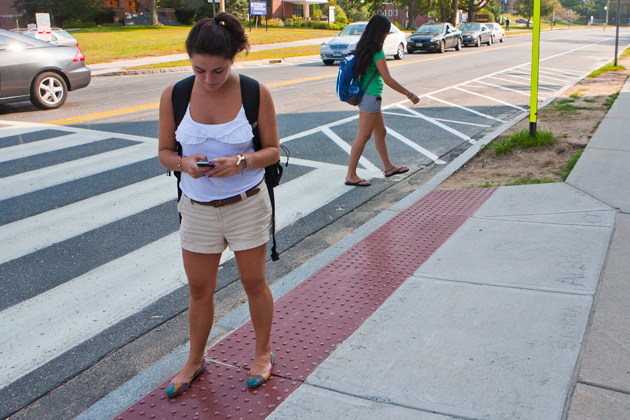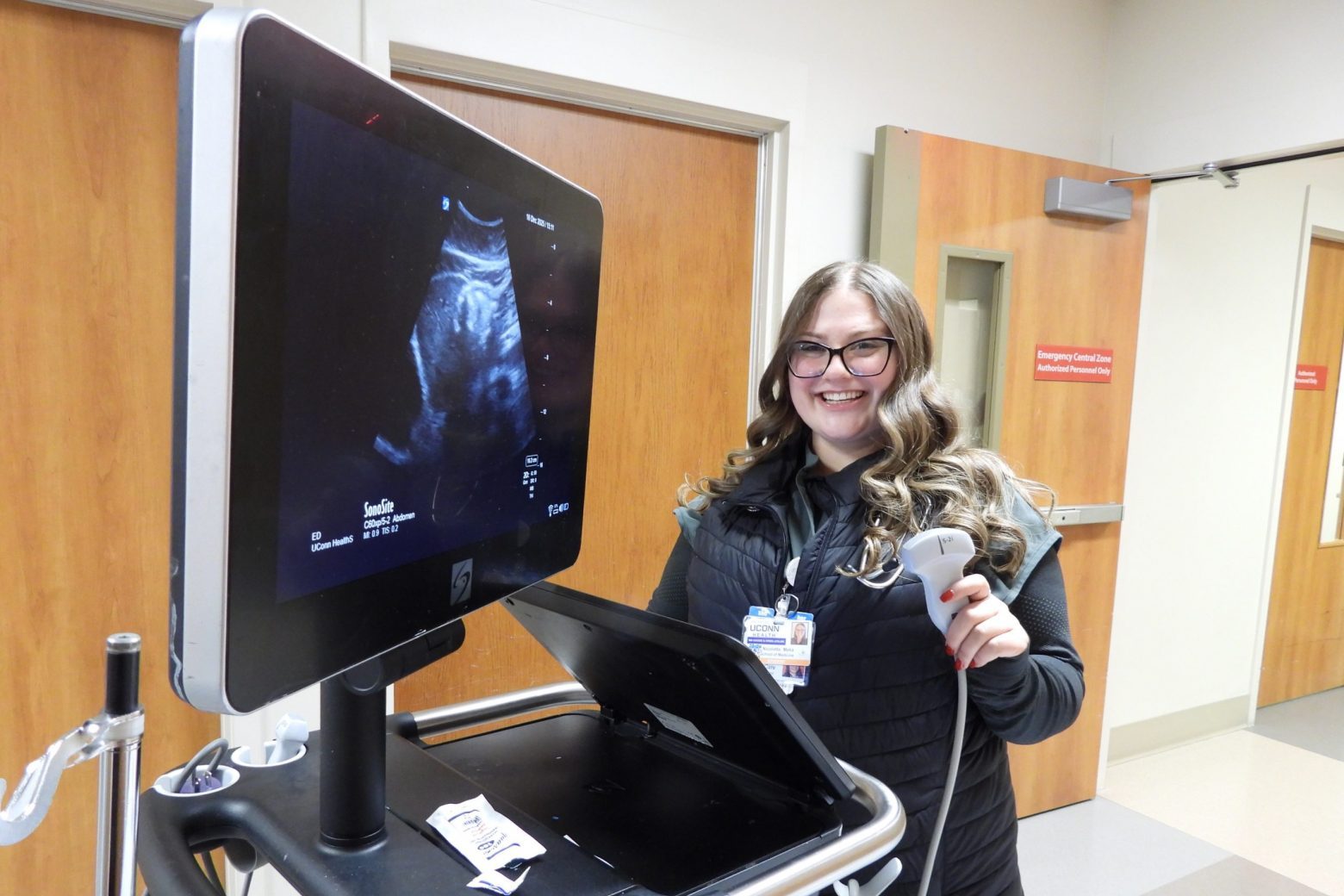
You’re in the middle of UConn’s main campus in Storrs, unable to find your destination. If you’re packing virtually any device that’s internet-connected to a modern web browser – mobile phone, e-reader, laptop, or tablet – you now have access to UConn’s comprehensive campus map.
A recently launched beta version of a mobile map for the Storrs campus offers on-the-spot assistance, saving time and reducing stress – especially at the start of a new school year.
“Two weeks ago, thousands of new students arrived on campus,” says Robert Chudzik, internet services manager. “These students are in the sweet spot of the prime demographic, 18-34 year-olds, for mobile smartphone users. We rolled out a mobile campus map in beta form, knowing we can improve upon it, because a) they’ll need it, and b) the vast majority of incoming students have either a smartphone or a tablet.”
Based on information from peer institutions, Chudzik’s team learned that mobile map usage spikes in the first weeks of each semester – and that these are initially the most popular of all campus websites. Since its Aug. 26 launch, more than 10,500 users have accessed the mobile map site.
The University uses Google Maps for both its Storrs Campus desktop map and the mobile map. Just as on a desktop, the mobile map website offers search functionality and zoom control.

Chudzik notes that the mobile map is a website that’s optimized for mobile devices, not an ‘app’ that you download and install on your phone. “Even technically savvy people may not be aware of this important distinction,” he says. “We may create an app in the future. But then we’d need to create a separate app for each of the major phone operating systems (Android, iPhone, and Blackberry), whereas now we have just one website.”
Using Google Maps as the underlying state-of-the-art technology for UConn’s mobile website, web developer Joel Salisbury and web designer Christine Ballestrini customized an overlaying application with UConn-specific categories.
“Our team’s work equals Google Maps with UConn value added,” says Salisbury.
Benefits include:
- searching by building code, name, department, or keyword;
- browsing by category (arts/culture, food/cafés, residence halls, etc.);
- photos and descriptions of all buildings – so when you get there you’ll know you’ve arrived;
- information about the nearest public parking for some popular facilities, such as Gampel Pavilion or the Jorgensen Center for the Performing Arts; and
- detailed driving directions – or just the address, so you can use your own GPS.
The new map website also offers a feature specific to a mobile device: it uses geo-location (“You are here”), so you can zoom out and view the map in the context of where you are on campus.
“It’s labeled a ‘beta’ version because people generally understand that this means ‘be forgiving,’” says Chudzik. “Specifically, the interface between the website’s geo-locations and the GPS features on different phones can be up to a block away from where you really are. That happens just because mobile web technology is so new and evolving so quickly.”
Feedback is welcome, and may be sent via the link on the mobile map home screen, http://maps.uconn.edu/index.php/m/.
Says Chudzik, “Once people are out there stuck in the middle of campus trying to find a building, we’ll learn what else needs improvement.”



